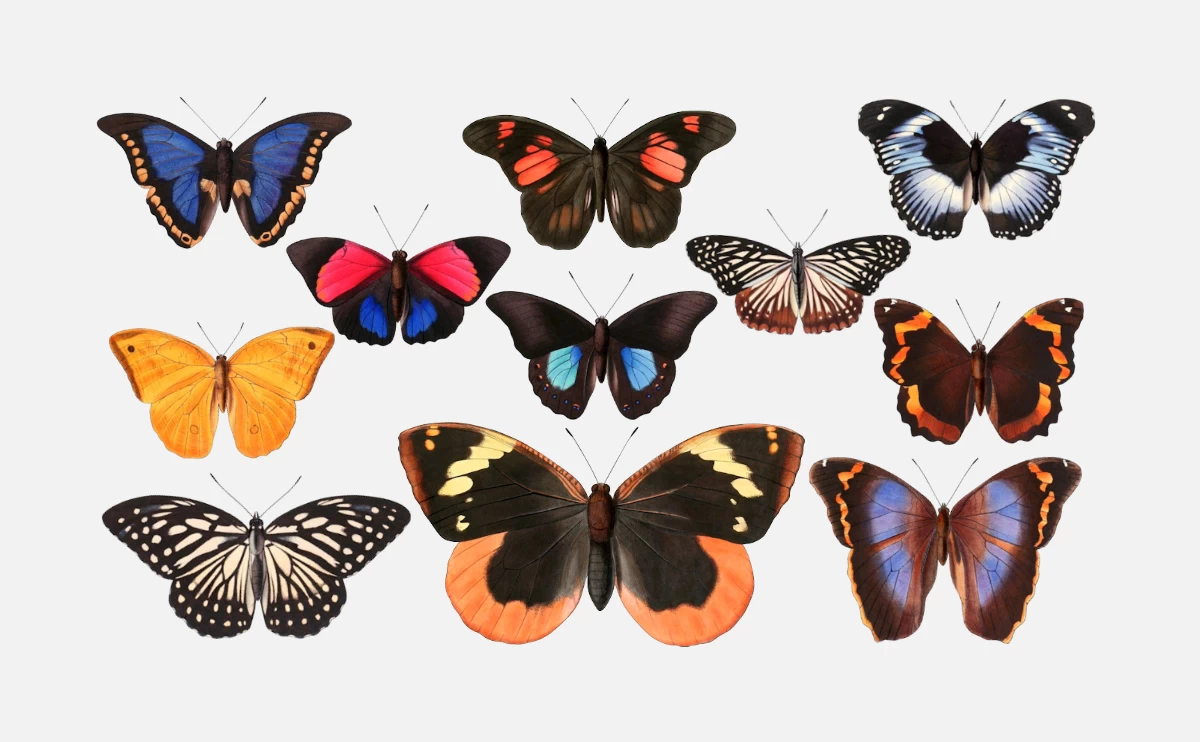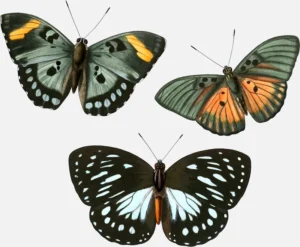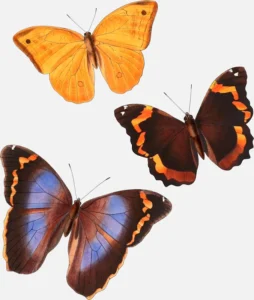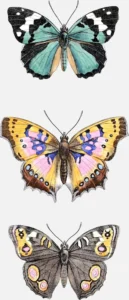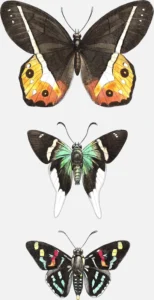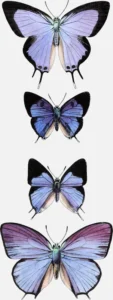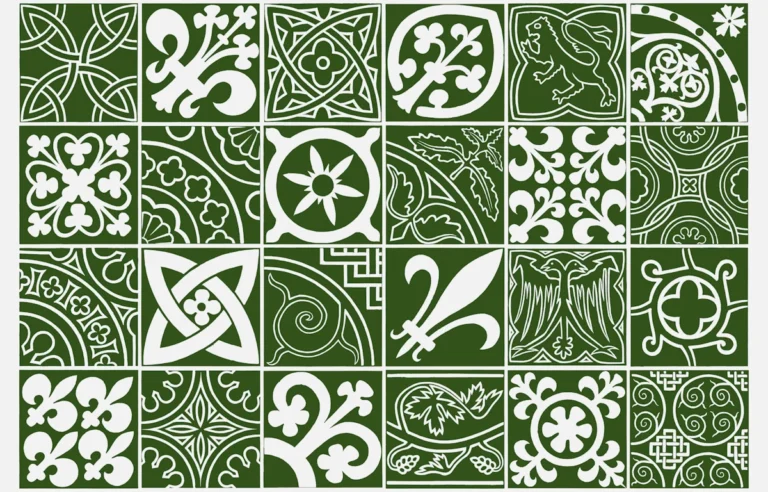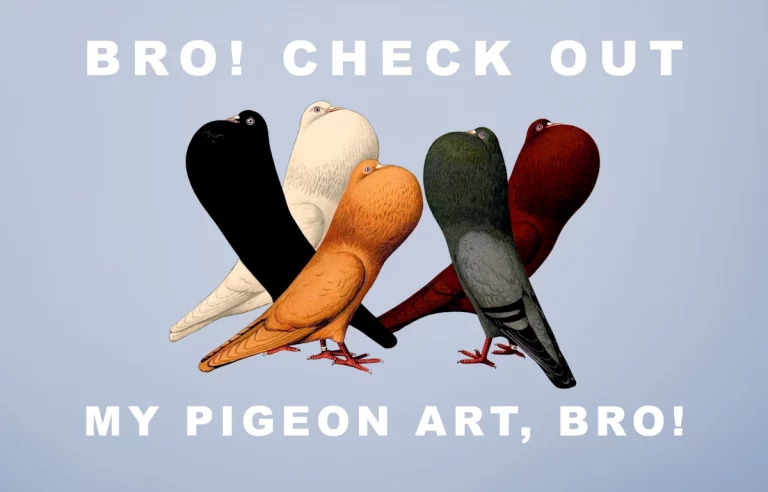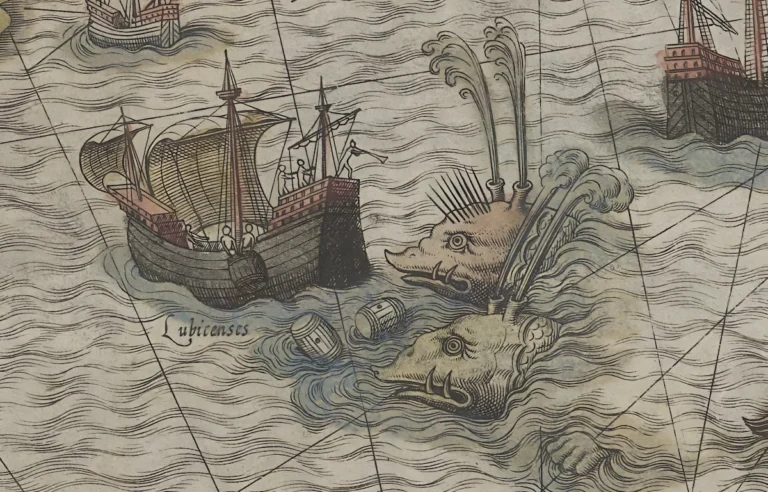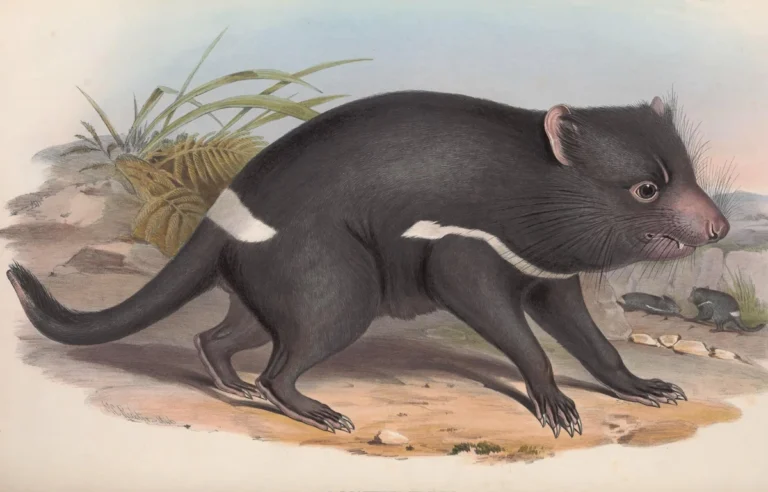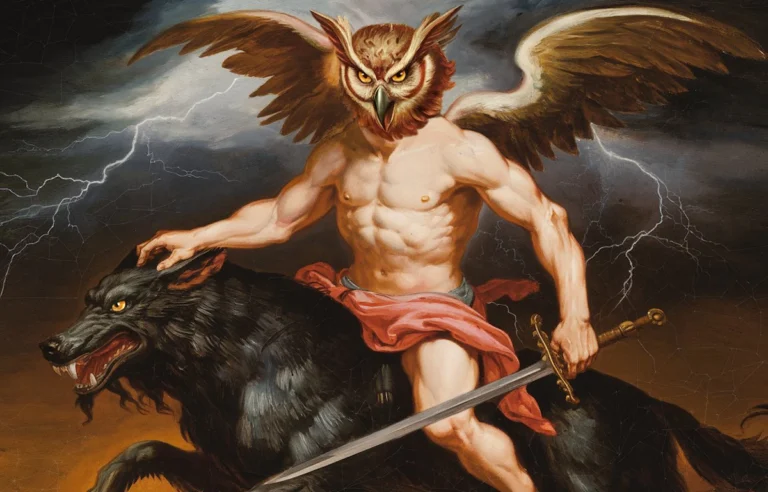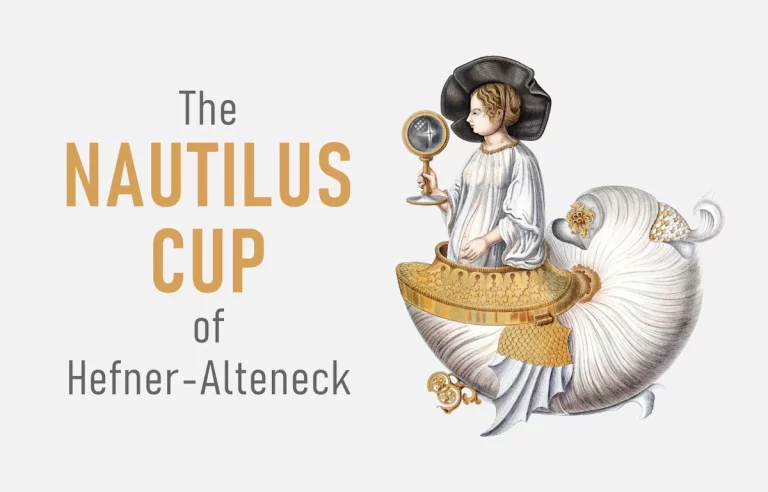19th Century Butterfly Illustrations: A Study of Two Landmark Works
The 19th century was a golden era for natural history, marked by a surge in the exploration of the natural world and the documentation of its myriad forms. Among the most captivating subjects for both scientists and artists were butterflies, with their dazzling array of colors and patterns. Two seminal works from this period stand out: The Genera of Diurnal Lepidoptera by Edward Doubleday and Histoire Naturelle des Lépidoptères Exotiques by Hippolyte Lucas. These publications not only advanced the scientific understanding of butterflies but also left an indelible mark on the art of natural history illustration.
Edward Doubleday's "The Genera of Diurnal Lepidoptera"
Edward Doubleday (1810-1849), a prominent English entomologist, dedicated much of his life to the study of butterflies. His magnum opus, The Genera of Diurnal Lepidoptera, published posthumously between 1846 and 1852, remains one of the most comprehensive and beautifully illustrated works on butterflies.
Scientific Contributions
The Genera of Diurnal Lepidoptera was groundbreaking in its systematic approach to classifying butterflies. Doubleday meticulously described and cataloged various genera, providing detailed morphological descriptions and taxonomic classifications. His work was instrumental in laying the foundations for modern lepidopterology.
One of the key scientific contributions of Doubleday’s work was the clear differentiation between diurnal (day-flying) and nocturnal (night-flying) Lepidoptera. This distinction helped in organizing the vast diversity of butterflies and moths into more manageable categories, facilitating further research and study.
Artistic Excellence
The illustrations in The Genera of Diurnal Lepidoptera are a testament to the meticulous attention to detail that characterized 19th-century natural history art. Doubleday collaborated with renowned artist William Chapman Hewitson (1806-1878), whose exquisite plates brought the text to life. These illustrations were not mere artistic endeavors but were scientifically accurate representations, aiding in the identification and study of various species.
The use of hand-colored lithographs in this work exemplified the high standards of the period. Each plate was a labor of love, with artists painstakingly applying color to each print, ensuring that the vibrancy and subtleties of butterfly wings were captured with precision. The result was a series of illustrations that were both scientifically valuable and visually stunning.
Legacy and Influence
Doubleday’s The Genera of Diurnal Lepidoptera had a profound impact on both entomology and natural history illustration. The accuracy and beauty of the illustrations set new standards for scientific publications. Moreover, the systematic approach to classification influenced subsequent generations of entomologists, establishing a framework that is still referenced today.
Hippolyte Lucas's "Histoire Naturelle des Lépidoptères Exotiques"
Hippolyte Lucas (1814-1899) was a French entomologist whose contributions to the study of exotic butterflies were equally significant. His work, Histoire naturelle des lépidoptères exotiques, published in 1835, focused on the butterflies of exotic regions, bringing to light species that were previously unknown to European scientists.
Exploration and Documentation
Lucas’s work was pioneering in its exploration of butterflies from distant lands. During the 19th century, the expansion of European colonialism and global exploration brought a wealth of new species to the attention of naturalists. Lucas meticulously documented these discoveries, providing detailed descriptions and classifications.
His approach combined scientific rigor with a sense of wonder and curiosity about the natural world. Lucas’s detailed observations of the morphology, behavior, and habitats of exotic butterflies enriched the scientific community’s understanding of these species. His work was instrumental in broadening the geographic scope of lepidopterological studies, highlighting the rich biodiversity of tropical regions.
Illustrative Mastery
The illustrations in Histoire Naturelle des Lépidoptères Exotiques are remarkable for their beauty and accuracy. They were created by Hippolyte Louis Emile Pauquet (1797-1871), a talented artist who used the latest techniques in lithography to produce vivid and detailed representations of exotic butterflies. The plates in this work captured the intricate patterns and vibrant colors of butterfly wings with stunning realism.
Pauquet’s illustrations were not only artistic masterpieces but also valuable scientific tools. They allowed scientists and enthusiasts to accurately identify and study species that they might never see in person. The attention to detail in these illustrations, from the texture of the wings to the subtle gradations of color, made them indispensable for scientific reference.
Impact and Legacy
Histoire Naturelle des Lépidoptères Exotiques had a lasting impact on the field of entomology and natural history illustration. Lucas’s comprehensive documentation of exotic species expanded the scientific knowledge of butterflies and inspired future research and exploration. The exquisite illustrations, masterfully executed by Pauquet, set a high standard for accuracy and artistry in scientific publications, influencing the work of subsequent naturalists and illustrators.
The Broader Context of 19th Century Butterfly Illustrations
The works of Edward Doubleday and Hippolyte Lucas must be viewed within the broader context of 19th-century natural history illustration. This period saw a confluence of scientific discovery and artistic excellence, driven by a passion for understanding and documenting the natural world. Advances in printing technology, particularly lithography, enabled the production of detailed and vibrant illustrations that were previously unattainable.
Natural history illustrators of the 19th century were often both scientists and artists, combining their expertise to create works that were both informative and aesthetically pleasing. The demand for such works was high, driven by the growing interest in natural history among the educated public and the expansion of scientific societies and institutions.
Illustrations played a crucial role in the dissemination of scientific knowledge. They provided a visual reference that complemented the written descriptions, making it easier to identify and study species. In an era before photography, these illustrations were the primary means of documenting and sharing the wonders of the natural world.
Conclusion
The 19th century was a transformative period for the study and illustration of butterflies. The works of Edward Doubleday and Hippolyte Lucas stand out as exemplary contributions to both science and art. The Genera of Diurnal Lepidoptera and Histoire Naturelle des Lépidoptères Exotiques not only advanced the scientific understanding of butterflies but also set new standards for the art of natural history illustration.
Through the meticulous documentation of Doubleday and Lucas, and the exquisite illustrations of Hewitson and Pauquet, these texts captured the beauty and diversity of butterflies, inspiring future generations of scientists and artists. Their legacy endures, reminding us of the importance of combining scientific inquiry with artistic expression to fully appreciate the wonders of the natural world.


